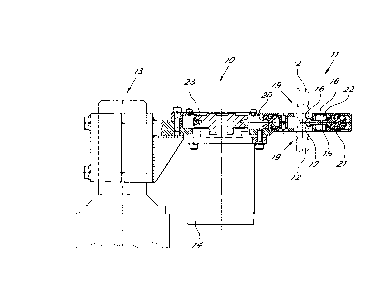Some of the information on this Web page has been provided by external sources. The Government of Canada is not responsible for the accuracy, reliability or currency of the information supplied by external sources. Users wishing to rely upon this information should consult directly with the source of the information. Content provided by external sources is not subject to official languages, privacy and accessibility requirements.
Any discrepancies in the text and image of the Claims and Abstract are due to differing posting times. Text of the Claims and Abstract are posted:
| (12) Patent Application: | (11) CA 2287868 |
|---|---|
| (54) English Title: | WELDING ELECTRODE RESHAPING DEVICE |
| (54) French Title: | DISPOSITIF DE RESTRUCTURATION POUR ELECTRODE DE SOUDAGE |
| Status: | Deemed Abandoned and Beyond the Period of Reinstatement - Pending Response to Notice of Disregarded Communication |
| (51) International Patent Classification (IPC): |
|
|---|---|
| (72) Inventors : |
|
| (73) Owners : |
|
| (71) Applicants : |
|
| (74) Agent: | SMART & BIGGAR LP |
| (74) Associate agent: | |
| (45) Issued: | |
| (22) Filed Date: | 1999-11-01 |
| (41) Open to Public Inspection: | 2000-05-11 |
| Availability of licence: | N/A |
| Dedicated to the Public: | N/A |
| (25) Language of filing: | English |
| Patent Cooperation Treaty (PCT): | No |
|---|
| (30) Application Priority Data: | ||||||
|---|---|---|---|---|---|---|
|
A welding electrode dressing device in particular in
automated welding stations comprises an electrode treatment
head (11, 111) equipped with upsetting members (15, 115)
which reshape the tip of an electrode inserted in it
without removing material. Advantageously the treatment
head (11, 111) comprises two treatment seats (19, 119)
arranged on opposite sides thereof to each receive the end
(12) of a pair of welding gun electrodes.
Note: Claims are shown in the official language in which they were submitted.
Note: Descriptions are shown in the official language in which they were submitted.

2024-08-01:As part of the Next Generation Patents (NGP) transition, the Canadian Patents Database (CPD) now contains a more detailed Event History, which replicates the Event Log of our new back-office solution.
Please note that "Inactive:" events refers to events no longer in use in our new back-office solution.
For a clearer understanding of the status of the application/patent presented on this page, the site Disclaimer , as well as the definitions for Patent , Event History , Maintenance Fee and Payment History should be consulted.
| Description | Date |
|---|---|
| Application Not Reinstated by Deadline | 2005-11-01 |
| Time Limit for Reversal Expired | 2005-11-01 |
| Inactive: Abandon-RFE+Late fee unpaid-Correspondence sent | 2004-11-01 |
| Deemed Abandoned - Failure to Respond to Maintenance Fee Notice | 2004-11-01 |
| Letter Sent | 2004-05-13 |
| Reinstatement Requirements Deemed Compliant for All Abandonment Reasons | 2004-04-30 |
| Deemed Abandoned - Failure to Respond to Maintenance Fee Notice | 2003-11-03 |
| Inactive: Office letter | 2001-12-05 |
| Application Published (Open to Public Inspection) | 2000-05-11 |
| Inactive: Cover page published | 2000-05-10 |
| Inactive: First IPC assigned | 2000-01-19 |
| Letter Sent | 1999-12-02 |
| Inactive: Filing certificate - No RFE (English) | 1999-12-02 |
| Application Received - Regular National | 1999-11-26 |
| Abandonment Date | Reason | Reinstatement Date |
|---|---|---|
| 2004-11-01 | ||
| 2003-11-03 |
The last payment was received on 2004-04-30
Note : If the full payment has not been received on or before the date indicated, a further fee may be required which may be one of the following
Patent fees are adjusted on the 1st of January every year. The amounts above are the current amounts if received by December 31 of the current year.
Please refer to the CIPO
Patent Fees
web page to see all current fee amounts.
| Fee Type | Anniversary Year | Due Date | Paid Date |
|---|---|---|---|
| Registration of a document | 1999-11-01 | ||
| Application fee - standard | 1999-11-01 | ||
| MF (application, 2nd anniv.) - standard | 02 | 2001-11-01 | 2001-10-24 |
| MF (application, 3rd anniv.) - standard | 03 | 2002-11-01 | 2002-11-01 |
| MF (application, 4th anniv.) - standard | 04 | 2003-11-03 | 2004-04-30 |
| Reinstatement | 2004-04-30 |
Note: Records showing the ownership history in alphabetical order.
| Current Owners on Record |
|---|
| FATA AUTOMATION S.P.A. |
| Past Owners on Record |
|---|
| CRISTIANO ROSSI |
| GAETANO DI ROSA |
| SERGIO CAPPA |